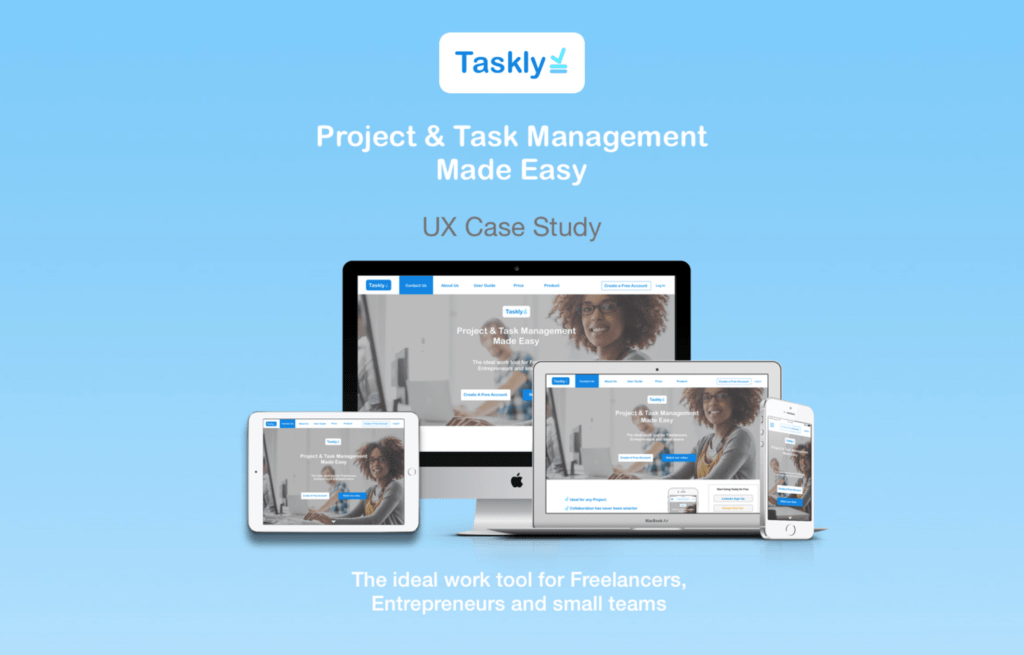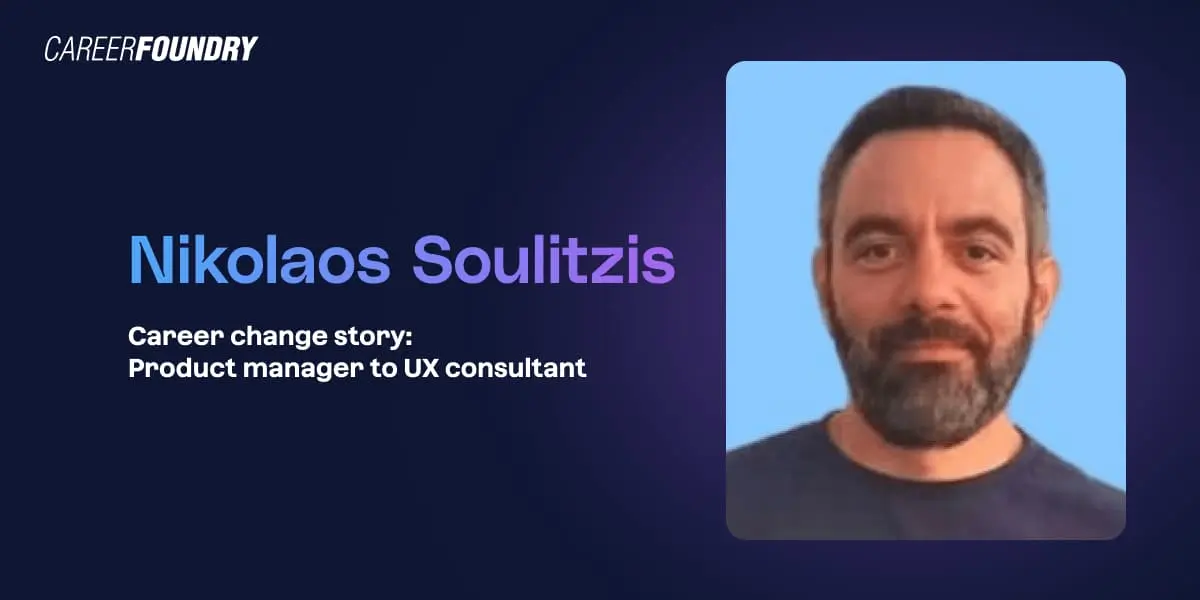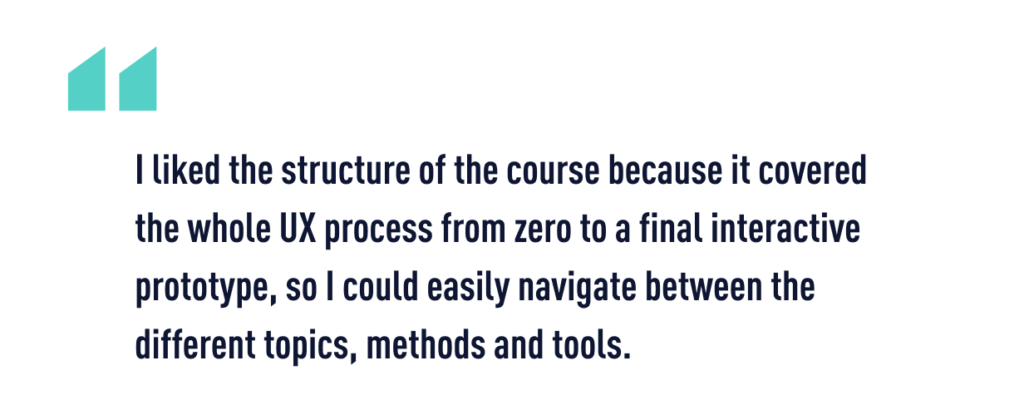Product management and user experience (UX) design roles have a lot in common. Both have good salaries and have a bright job outlook. But while a product manager manages the execution of the product, a UX designer focuses on the technical side of user experience.
There’s naturally lots of overlap, so if you’re curious about product manager career progression paths, you might not have to think too far outside the box!
If you’re ready to dive right into UX, check out our top-rated free 6-day short course in UX.
From product manager to UX designer
Whilst working for a travel booking platform in London, Nikolaos discovered the secret to building successful products: great UX. The more he explored, the more his fascination grew:
“While I was working as a product manager, I realized the importance that UX plays in building successful products, and I was fascinated by the methodologies and tools used.”
UX draws on a variety of different disciplines—from marketing and business to psychology and, of course, design. The move felt natural for Nikolaos and he knew it was a viable career progression from product manager to UX designer.
He sought a structured learning approach that would achieve maximum results in a short space of time. The CareerFoundry UX Design Program offered just the right amount of depth:
“User experience is a complex area that includes various methodologies, approaches, and tools. I had some understanding of the basics from my product manager background, but I thought a bootcamp style course would help me improve my UX skills in a more organized manner and in a shorter time.”
Navigating the CareerFoundry course with a mentor’s help
Nikolaos believes that his expert mentor took his learning to new heights. Throughout the CareerFoundry course, tutors provide feedback on task submissions, while mentors will check in via pre-booked calls, giving students the opportunity to discuss any concerns and seek valuable advice and one-to-one guidance:
“I think the most useful aspect of any course is to be able to have someone to guide you along the way. Having a mentor was the most useful and interesting part of the CareerFoundry course because he helped me improve my work and take my skills to another level.”
Invigorated by his new set of skills, Nikolaos dove head-first into the industry—not only polishing up his CV and portfolio, but also actively networking and seeking out fresh opportunities:
“After finishing the course with CareerFoundry, the first step was to redesign my CV, add new projects to my portfolio and ask for feedback from professionals I trusted. At the same time, I started to search for UX meetups, groups and events where I could meet other UX designers and network for job opportunities and collaborations. Then, after I received some initial feedback for my CV and portfolio, I started applying for UX roles and managed to do some freelancing projects.”

Nikolaos’s final project from CareerFoundry: a presentation for Taskly, a project management tool. To see more of his work, visit his portfolio website.
Together with his CareerFoundry certification, being proactive and enthusiastic proved to be the perfect recipe for his product manager career progression:
“I think the structure and depth of the UX course acted as a good indicator of the level of UX skills I managed to acquire. Also, CareerFoundry is well recognized among UX professionals in the industry, even though it’s not a university.”
Life in the UX field
But did his enthusiasm continue once he actually started working as a UX designer?
“It was fascinating for me to work as a UX designer for two digital agencies, and to see how they apply UX methodologies and techniques to real high-scale projects. The best aspects of my new career are being able to approach problems holistically and to innovate, collaborating with other designers, and having the freedom to experiment and solve problems creatively.”
Nikolaos is now working as a freelance UX consultant and product strategist, currently focusing on a new project as a founder. To collaborate with him, you can reach out on LinkedIn.
To anyone considering a career change to UX design regardless of your previous experience, Nikolaos strongly recommends taking a free introductory course before making the leap:
“If you’re doing it for the right reasons, I would say go for it! That is, if you are passionate about it, and not making a career change just because of the money. I would suggest ‘testing’ it first to see if you like and understand UX.
At present, you have the resources to explore and investigate any positions you are interested in. For example, you can take a free introductory course and talk with experienced UX designers. Then, you can decide if you want to invest the money and time to pursue a career change.”
If you want to take Nikolaos’ advice, you can give our free 6-day UX design short course a try. You can also book a call with an expert program advisor at CareerFoundry if you’d like some help figuring out your next steps about making a career change into tech.

